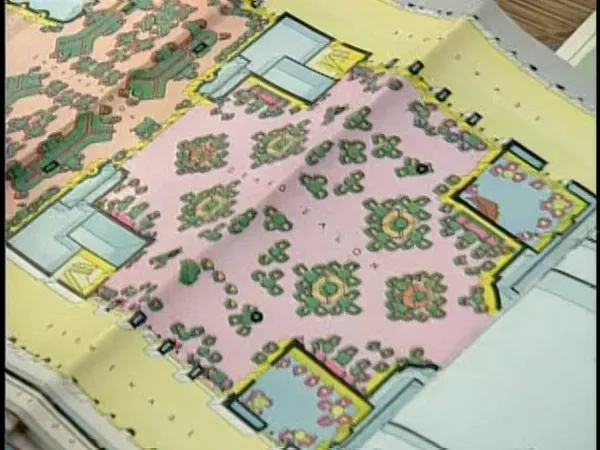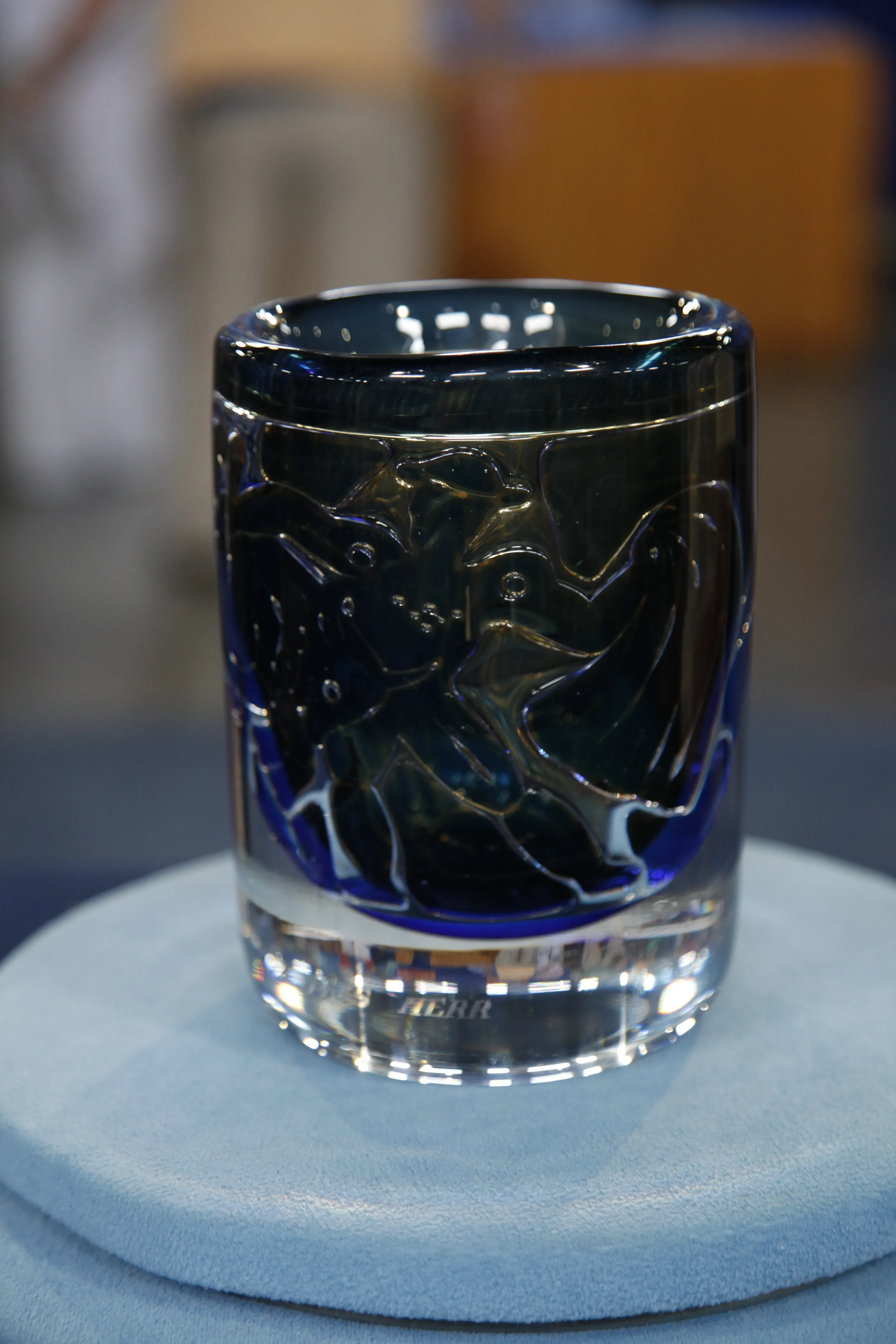GUEST: I was at a consignment shop in Greenville, South Carolina, and I saw a vase there, and I thought it was very pretty, and I bought it.
APPRAISER: Did you know what it was?
GUEST: Not at all.
APPRAISER: Well, this is a piece of art glass made by a Swedish company called Orrefors. Orrefors started making glass in the late 19th century, but the art glass production wasn't made until the teens. There were several different lines made at Orrefors. This type of glass is called Ariel. The name refers to the air spirit in Shakespeare's play The Tempest.
GUEST: Oh.
APPRAISER: There are a couple of layers involved in here, and there's air that's trapped in it. It's probably some of the heaviest glass I've ever handled.
Initially Ariel was made in the 1930s. The designs that were made in the 1930s were continued into the 1960s, sometimes even the 1970s. This is a design that I don't ever remember seeing before. Ordinarily the most prevalent design is of this woman in half profile facing a dove, and I've seen that over and over and over again. So I was really delighted when I saw this because it was something different. Did you notice that there was an inscription on it?
GUEST: Yeah, I see the inscription on the bottom here, like it was a trophy or something. And I guess it's in Swedish, because I can't translate it.
APPRAISER: Well, it is in Swedish. We consulted as many people as we could who might have some knowledge of the Swedish language. And what we discovered is the first thing that's on there, it says "SCIM." We think that's an acronym for some type of organization. But then it also says, "Jönköping," which is actually a place in Sweden. One thing that I can tell you for sure, it was made in 1966, which is the date on the inscription. And the reason I know that is because on the underside, it says “Orrefors," and then it says "Ariel," which is the type of glass. Then there is a number, 207A. In my reference material, they show that the number 207A is the year 1966. So that corresponds with the inscription. Also, it's signed by the artist, Edwin Ohrstrom. Edwin Ohrstrom was the person who came to Orrefors in the 1930s and worked with this particular line for many, many years. And he was a sculptor by training. And one of the great things about this piece is that it almost feels like a piece of sculpture. In a retail store this would sell today for between $5,000 and $7,000.
GUEST: Wow.
APPRAISER: How much did you pay for it?
GUEST: Forty.








